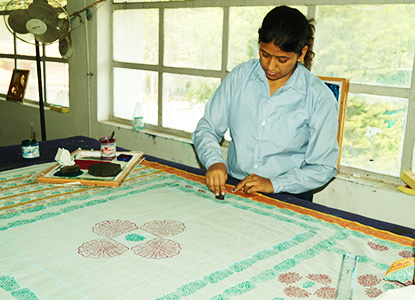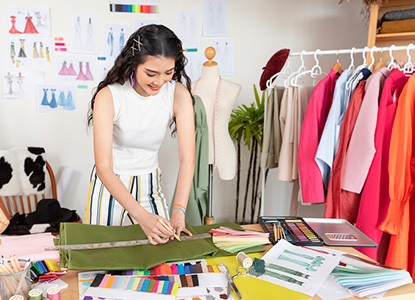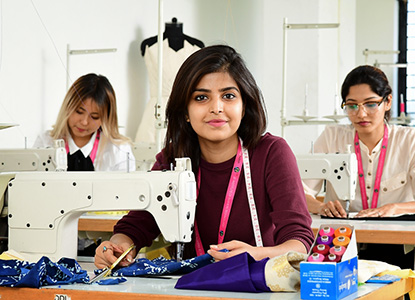
Program Duration:
1 Year / 12 Months (Available in Regular or Part-time options)
Eligibility Criteria:
Admission is open to candidates who have successfully completed their 10th standard or 10+2 in any discipline or higher.
Program Overview:
The Diploma in Textile Designing is a comprehensive course that introduces students to the creative and technical aspects of textile design. This field includes fashion design, carpet manufacturing, and any cloth-related design sector. The program focuses on the creation of textiles and how these designs are essential not only for their practical uses but also for their influence on fashion trends and industry standards. Textile designers are the innovators who inspire collections, trends, and styles within both the fashion and interiors sectors. The industry is highly creative and requires a balance of artistic flair and business acumen.
Program Structure:
Semester I:
-
Basic Weaves:
Introduction to fundamental weave structures and their applications in textile design. Learn the basics of weaving, types of weaves, and their uses in creating different fabrics. -
Compound Weave:
Study advanced weaving techniques that combine multiple weave structures to create intricate and textured fabrics. -
Concept of Design:
Explore the core principles of design, including color theory, design elements, and how to apply these concepts to textile design. -
Introduction to Loom:
Get hands-on experience with looms used in textile manufacturing. Understand the various types of looms and how they function in producing woven textiles. -
Project Work Assignment-I:
Work on a practical project to implement the concepts learned in the first semester. This assignment focuses on creating your own designs and demonstrating your understanding of textile production techniques. -
Vision Texcelle:
Introduction to the software tool “Vision Texcelle,” used for designing textiles and visualizing fabric patterns.
Semester II:
-
Illustrator:
Learn how to use Adobe Illustrator for creating digital textile designs, including surface patterns and illustrations. Master essential tools and techniques for textile designing on digital platforms. -
Ned Graphics (Loom Editor):
Hands-on training with Ned Graphics Loom Editor to create and edit woven fabric designs digitally. -
Ned Graphics (Product Creator):
Learn to design textile products using Ned Graphics software, focusing on pattern development and product visualization. -
Ned Graphics (True Coloring):
Explore the features of Ned Graphics True Coloring tool, which helps in creating accurate and realistic color representations for textile designs. -
Ned Graphics (Virtual Loom):
Get acquainted with the Virtual Loom feature in Ned Graphics, which simulates the loom operation digitally, allowing you to visualize and test your textile designs. -
Project Work Assignment-II:
A more advanced project where students can apply the skills learned throughout the program to design and create digital textile patterns and products. This project helps build a professional portfolio. -
Yam:
Study the processes involved in yarn creation, selection, and its impact on the final textile product.
Career Scope:
Upon successful completion of the Diploma in Textile Designing, candidates will have the skills to work in a variety of roles within the textile industry. Some potential job roles include:
-
Color and Style Specialist
-
Color and Trend Forecaster
-
Textile and Surface Developer
-
Print and Pattern Designer
-
Strategic Intervener
-
Textile Design Consultant
Graduates can work in industrial and non-industrial locations, specializing in sectors such as interior textiles (upholstery, soft furnishings, carpets) or fabrics used for clothing (including fashion and specialized fabrics such as fireproof textiles). Many textile designers choose to be self-employed, while others work as part of a team in design studios or fashion houses.
This program equips students with both creative and technical skills, allowing them to excel in the rapidly growing textile industry while keeping up with trends and innovations in both fashion and interior design sectors.








































